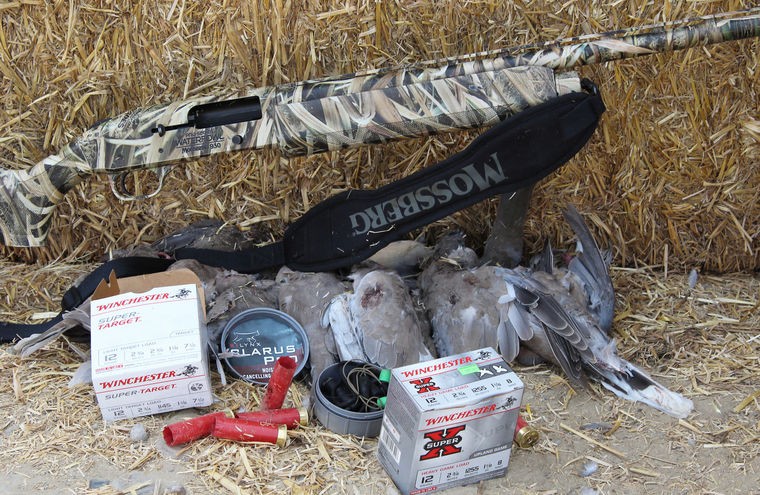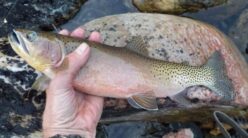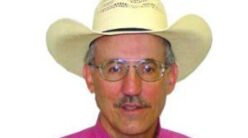I love dove hunting and I can’t believe it took me as long as it did to get out.
Ok, maybe I’m being a little bit of a drama queen. I didn’t get out until the fourth day, but it was traumatic for someone that loves dove hunting as much as I do. I called my buddy Ron Spomer and it was an easy sale to get him on board to take off the next morning on a dove hunt.
I first started dove hunting when I was young. I couldn’t even reach the trigger. I’d borrow my sister’s Fox double-barreled shotgun and dad would only let me put one shell in it. I’d have to hold the butt under my arm and sorta lay my head on the lever that opens the barrels.
Since those early days, I have made up for only being able to load one shell. I have burned through pickup loads of shells since those days. Dove hunting is a kicked-back and yet high-speed shooting event. I love it. And the weather is mild. When it starts getting cool, they head south.
There are basically two methods employed to hunt doves. You sit around a water hole and shoot them as they come in for a drink. Or you wait along a fence line at their feeding fields. However, sitting along a fence line with trees or along a patch of trees is productive a lot of times. Down south they sit in or along the fence lines surrounding milo fields.
Decades ago in Texas, the season didn’t start until 1 p.m. during the month of September, but it is now a daylight-to-dark event. But really, 99 percent of your shooting will be during the first two to three hours of the day and the last two to three hours of the day. That’s when they really start flying.
I’ve hunted them in Texas, Kansas, Nebraska, Colorado and Idaho, but probably the most unique method I ever used was in Nebraska. There I hunted them on marijuana patches. It grew wild in the gullies and ditches and the doves seemed to love to eat the seeds.
The fun thing about hunting them in West Texas is that they also have white-wing doves, so you could shoot two limits, one of mourning doves and one white-wing. Now a lot of states have Eurasian doves, and because they’re an invasive species you can shoot them year-round. I can’t remember for sure, but I think we shot more Eurasians this trip than mourning doves.
We were hunting down near one of our feedlots, which they like to hang around because of the abundance of grain. We did have one weird deal. Ron dropped a dove in a thick weed pile near an old fence line. When he went over to look for it, he discovered that there was a little filly laid out with her knee hung in the fence. He called me over and we worked for an hour but couldn’t get her up.
We then went down to the feedlot and grabbed a couple of cowboys to help out. We worked another hour cutting wire and trying to get her up, but she’d given up. They went to get their foreman to help out and all ended well.
This is why a lot of ranchers like to have hunters on their ranch. They help alert them if there is a problem with their livestock. We’d been hunting there for two hours but because of the tall weeds and the way she was stretched out, you couldn’t see her. She would have died there unbeknownst to anyone.
By the time we spent two hours working on the filly, it was past lunch and the doves had stopped flying, so we grabbed my Benjamin Marauder and went pigeon hunting. We had to have shot nearly a dozen before things slowed down.
Today we’d used some MOJO clip-on dove decoys and the MOJO Dove A Flickers. The Flickers work great on doves, but they also work on pigeons. You’ll be shooting a lot so you’ll want to wear hearing protection. Ear muffs bounce your head away from the stock so I like wearing Silynx Clarus Pros.
It got hot so we took out to a secluded spot on the prairie and cleaned our birds. Because it was Labor Day, we decided to head home early and have a barbecue. We blackened some salmon, smoked some salmon and fried up some dove poppers. Fun day.
Tom Claycomb lives in Idaho and has outdoors columns in newspapers in Alaska, Idaho, Utah, Nevada, Colorado and Louisiana. He also writes for various outdoors magazines and teaches outdoors seminars at stores like Cabela’s, Sportsman’s Warehouse and Bass Pro Shop.



